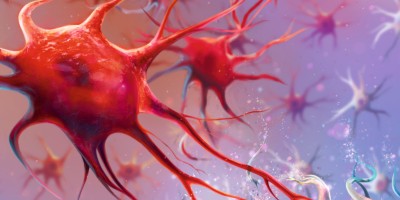Laboratory Corporation v. Metabolite Laboratories may signal renewed interest on the part of the US Supreme Court in what is, and what is not, patentable in biology.
References
US Constitution, Art. 1, § 8, cl. 8.
US Patent Act, 35 US Code §§ 1 et seq.
Burk, D. & Lemley, M. Policy levers in patent law. 89 Va. L. Rev. 1575 (2003).
In re Fisher, 421 F.3d 1365 (Fed. Cir. 2005).
444 US 1028 (1980).
See, e.g., In re Mancy, 499 F.2d 1289 (CCPA 1974).
See Funk Bros. Seed v. Kalo Inoculant, 333 US127 (1948).
For a detailed review of the Chakrabarty case, see Eisenberg, R.S. The Story of Diamond v. Chakrabarty: Technological Change and the Subject Matter Boundaries of the Patent System. in Intellectual Property Stories (eds. Ginsburg, J.C. & Dreyfuss, R.C.) 327–357 (Foundation Press, New York, 2006).
Parke-Davis & Co. v. H.K. Mulford & Co., 189 F.95 (SDNY 1911), aff'd, 196 F.496 (2d Cir. 1912).
Merck & Co. v. Olin Mathiesen Chemical Corp., 253 F.2d156 (4th Cir. 1958).
See, e.g., Amgen v. Chugai Pharmaceutical Co., 927 F.2d 1200, 1206 (Fed. Cir.), cert. denied sub nom. Genetics Institute v. Amgen, 502 US 856 (1991) (“A gene is a chemical compound, albeit a complex one....”).
See Adler, R.G. Genome research: fulfilling the public's expectations for knowledge and commercialization. Science 257, 908 (1992); Eisenberg, R.S. Genes, patents, and product development. Science 257, 903 (1992); Healy, B. Special report on gene patenting. N. Engl. J. Med. 327, 664 (1992); Kiley, T.D. Patents on random complementary DNA fragments? Science 257, 915 (1992).
State Street Bank & Trust v. Signature Financial Group, 149 F.3d 1368 (Fed. Cir. 1998), cert. denied, 525 US 1093 (1999).
AT&T v. Excel Communications, 172 F.3d 1352 (Fed. Cir.), cert. denied, 528 US 946 (1999).
35 US Code §§ 101, 112.
Laboratory Corp. of America Holdings v. Metabolite Laboratories, Inc., 370 F.3d 1354 (Fed. Cir. 2004), cert. granted, 126 S. Ct. 543 (2005), vacated, reconsidered, and cert. granted, 126 S. Ct. 601 (2005); Supreme Court docket posted at http://www.supremecourtus.gov/docket/04-607.htm.
See, e.g., State St. Bank & Trust v. Signature Financial Group, 149 F.3d 1368, 1373 (Fed. Cir. 1999). (“Unpatentable mathematical algorithms are identifiable by showing they are merely abstract ideas constituting disembodied concepts or truths that are not 'useful.'...to be patentable an algorithm must be applied in a 'useful' way.”)
Ex parte Lundgren, 76 USPQ (BNA) 1385 (Bd. Pat. App. & Interferences 2005); USPTO, Request for comments on interim guidelines for examination of patent applications for patent subject matter eligibility. 70 Federal Register 75451 (Dec. 20, 2005).
Funk v. Kalo Inoculant, 333 US 127, 130 (1948).
Author information
Authors and Affiliations
Rights and permissions
About this article
Cite this article
Eisenberg, R. Biotech patents: looking backward while moving forward. Nat Biotechnol 24, 317–319 (2006). https://doi.org/10.1038/nbt0306-317
Issue Date:
DOI: https://doi.org/10.1038/nbt0306-317
- Springer Nature America, Inc.
This article is cited by
-
Emerging patent issues in genomic diagnostics
Nature Biotechnology (2006)
-
Reply to Patenting pathways
Nature Biotechnology (2006)


